-
 Bitcoin
Bitcoin $108,489.6704
1.13% -
 Ethereum
Ethereum $2,502.0528
2.92% -
 Tether USDt
Tether USDt $1.0002
0.00% -
 XRP
XRP $2.1941
0.51% -
 BNB
BNB $655.3375
1.00% -
 Solana
Solana $151.5977
1.27% -
 USDC
USDC $0.9999
0.00% -
 TRON
TRON $0.2768
0.32% -
 Dogecoin
Dogecoin $0.1676
2.86% -
 Cardano
Cardano $0.5675
0.98% -
 Hyperliquid
Hyperliquid $40.6109
7.48% -
 Bitcoin Cash
Bitcoin Cash $500.7746
2.09% -
 Sui
Sui $2.8328
2.03% -
 Chainlink
Chainlink $13.4452
1.26% -
 UNUS SED LEO
UNUS SED LEO $9.1623
0.39% -
 Avalanche
Avalanche $18.2267
2.24% -
 Stellar
Stellar $0.2382
0.00% -
 Toncoin
Toncoin $2.8885
1.68% -
 Shiba Inu
Shiba Inu $0.0...01159
0.91% -
 Litecoin
Litecoin $87.1827
0.88% -
 Hedera
Hedera $0.1511
2.90% -
 Monero
Monero $315.4992
-0.59% -
 Polkadot
Polkadot $3.4663
2.34% -
 Bitget Token
Bitget Token $4.6118
-0.65% -
 Dai
Dai $1.0000
-0.01% -
 Ethena USDe
Ethena USDe $1.0003
0.02% -
 Uniswap
Uniswap $7.2989
4.69% -
 Pepe
Pepe $0.0...01003
5.73% -
 Aave
Aave $275.5616
7.15% -
 Pi
Pi $0.5181
-2.49%
How to track NFT market trends? What data analysis tools are available?
To stay ahead in the NFT market, track trends using tools like Dune Analytics and Nansen, and combine data with insights from Twitter and Discord.
May 08, 2025 at 12:07 am
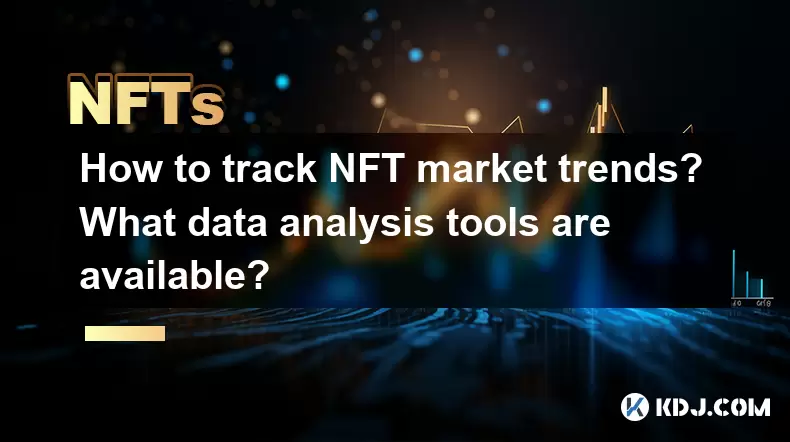
Tracking NFT market trends is essential for investors, collectors, and enthusiasts who want to stay ahead in the dynamic world of non-fungible tokens. By understanding market trends, you can make informed decisions about buying, selling, or holding NFTs. This article will guide you through the process of tracking NFT market trends and introduce you to various data analysis tools available for this purpose.
Understanding NFT Market Trends
NFT market trends refer to the patterns and movements in the NFT marketplace, including price fluctuations, trading volumes, and the popularity of different NFT collections. These trends are influenced by various factors such as the overall crypto market, celebrity endorsements, and the unique value propositions of individual NFTs.
To track these trends effectively, you need to focus on several key metrics:
- Price: The current price of an NFT and its historical price data.
- Trading Volume: The number of NFTs traded within a specific period.
- Market Cap: The total value of a particular NFT collection or the entire NFT market.
- Liquidity: How easily an NFT can be bought or sold without significantly affecting its price.
Data Sources for NFT Market Trends
To gather data on NFT market trends, you need to rely on reliable sources. Some of the most popular platforms for obtaining NFT data include:
- OpenSea: As one of the largest NFT marketplaces, OpenSea provides comprehensive data on NFT sales, prices, and trading volumes.
- Rarible: Another significant marketplace, Rarible offers insights into NFT trends and market activities.
- NFTGo: A platform dedicated to NFT data analytics, providing detailed statistics and trend analysis.
- CryptoSlam: A site that tracks sales across multiple NFT marketplaces, offering a holistic view of the NFT market.
Tools for Analyzing NFT Market Trends
Once you have gathered the necessary data, you can use various tools to analyze NFT market trends. Here are some of the most effective tools available:
Dune Analytics: Dune Analytics allows you to create custom dashboards and queries to analyze NFT data. It supports data from various blockchains, making it a versatile tool for NFT market analysis.
- How to Use Dune Analytics for NFT Trends:
- Navigate to the Dune Analytics website and create an account if you haven't already.
- Click on "Create New Query" to start building your analysis.
- Choose the appropriate dataset, such as OpenSea or Rarible.
- Write SQL queries to extract and analyze the data you need. For example, you might write a query to calculate the average price of NFTs from a specific collection over the past month.
- Visualize your data using the built-in charting tools.
- Save and share your dashboard to track trends over time.
- How to Use Dune Analytics for NFT Trends:
Nansen: Nansen offers advanced blockchain analytics, including tools specifically designed for NFT market analysis. It provides insights into wallet activities, token transfers, and market trends.
- How to Use Nansen for NFT Trends:
- Sign up for a Nansen account and select a subscription plan that suits your needs.
- Navigate to the NFT dashboard, where you can see an overview of the NFT market.
- Use the search function to find specific NFT collections or wallets you want to analyze.
- Explore the various metrics provided, such as trading volume, price changes, and liquidity.
- Create custom alerts to stay updated on significant market movements.
- How to Use Nansen for NFT Trends:
The Graph: The Graph is a decentralized protocol for indexing and querying data from blockchains. It can be used to build custom applications for tracking NFT market trends.
- How to Use The Graph for NFT Trends:
- Visit The Graph's website and create a subgraph for the blockchain and NFT marketplace you are interested in.
- Define the schema for the data you want to track, such as NFT sales, prices, and trading volumes.
- Deploy your subgraph and start indexing the blockchain data.
- Use GraphQL queries to retrieve and analyze the data in real-time.
- Build a frontend application to visualize the data and track trends over time.
- How to Use The Graph for NFT Trends:
Utilizing Social Media and Community Insights
In addition to data-driven tools, social media and community insights play a crucial role in understanding NFT market trends. Platforms like Twitter, Discord, and Reddit are hotspots for NFT discussions and can provide valuable qualitative data.
- Twitter: Following influential NFT artists, collectors, and analysts can give you real-time updates on market trends. Use hashtags like #NFT, #NFTart, and #CryptoArt to stay in the loop.
- Discord: Joining NFT community servers allows you to engage with other enthusiasts and gain insights into upcoming trends and projects.
- Reddit: Subreddits like r/NFT and r/CryptoArt are excellent resources for learning about new NFT drops, market sentiment, and community opinions.
Combining Quantitative and Qualitative Analysis
To get a comprehensive understanding of NFT market trends, it's essential to combine quantitative data from analytics tools with qualitative insights from social media and community discussions. This approach allows you to see not only the numbers but also the stories behind the trends.
- Example of Combined Analysis: Suppose you notice a sudden spike in the trading volume of a particular NFT collection on OpenSea. By checking Twitter and Discord, you might find that a celebrity endorsement or a new partnership announcement caused the surge. Combining this information can help you predict future price movements and make informed investment decisions.
Frequently Asked Questions
Q: How often should I check NFT market trends?
A: The frequency of checking NFT market trends depends on your investment strategy and risk tolerance. For active traders, daily or even hourly checks might be necessary. For long-term investors, weekly or monthly updates might suffice. It's important to stay informed but also to avoid becoming overwhelmed by market volatility.
Q: Can I use free tools to track NFT market trends?
A: Yes, there are several free tools available for tracking NFT market trends. Platforms like OpenSea and Rarible offer basic analytics for free. Additionally, Dune Analytics has a free tier that allows you to create and share queries, although advanced features might require a paid subscription.
Q: How can I identify emerging NFT trends before they become mainstream?
A: Identifying emerging NFT trends requires a combination of data analysis and community engagement. Use analytics tools to spot early signs of increased trading volume or price movements in specific collections. Additionally, stay active in NFT communities on social media to catch buzz about new projects and artists before they gain widespread attention.
Q: Are there any risks associated with relying on NFT market trend analysis?
A: Yes, there are risks involved. Market trends can be influenced by hype and speculation, leading to sudden price drops. Additionally, data from different sources might not always be accurate or up-to-date. It's crucial to use multiple sources and combine quantitative data with qualitative insights to mitigate these risks.
Disclaimer:info@kdj.com
The information provided is not trading advice. kdj.com does not assume any responsibility for any investments made based on the information provided in this article. Cryptocurrencies are highly volatile and it is highly recommended that you invest with caution after thorough research!
If you believe that the content used on this website infringes your copyright, please contact us immediately (info@kdj.com) and we will delete it promptly.
- Jasmy Coin, Bitcoin, and the Rise of Solaris Presale: What's the Buzz?
- 2025-06-30 18:30:12
- Wintermute, Bitcoin Lending, and Cantor Fitzgerald: A New Chapter?
- 2025-06-30 16:30:12
- Polkadot: From Ethereum Killer to Ghost Chain? The Crypto Fading Phenomenon
- 2025-06-30 16:50:12
- Bitget Lists NodeOps (NODE) for Spot Trading: A New Era for DePIN?
- 2025-06-30 16:30:12
- Warren Buffett, Bitcoin, and the Oracle of Omaha's Evolving Views
- 2025-06-30 16:35:12
- Blockchain, Bitcoin, and Holdings: Navigating the Crypto Landscape in Style
- 2025-06-30 17:10:11
Related knowledge
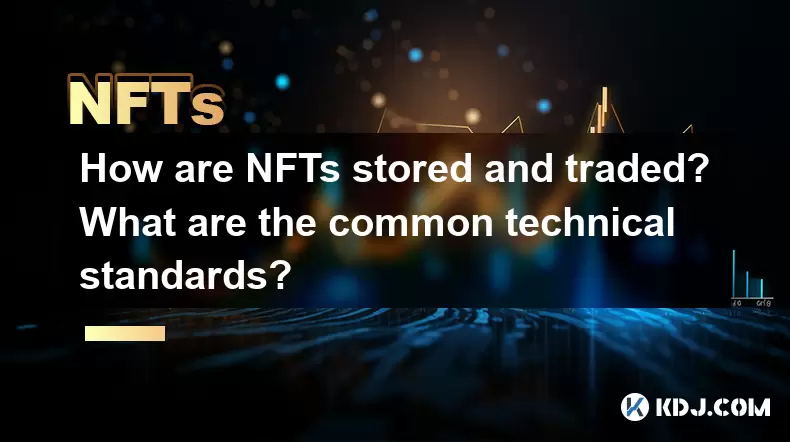
How are NFTs stored and traded? What are the common technical standards?
Jun 20,2025 at 08:49am
Understanding NFT Storage MechanismsNon-Fungible Tokens (NFTs) are digital assets that represent ownership of a unique item or piece of content, such as art, music, videos, or virtual real estate. The way NFTs are stored is crucial to their security and accessibility. Most NFTs are built on blockchain platforms like Ethereum, and the actual file—such as...
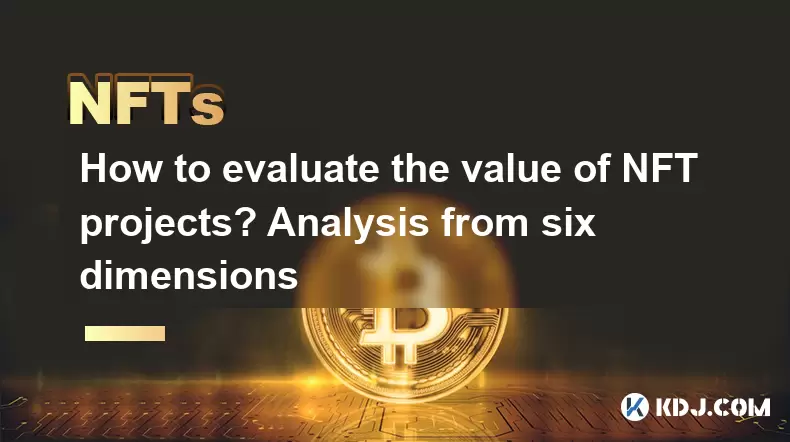
How to evaluate the value of NFT projects? Analysis from six dimensions
Jun 21,2025 at 02:28pm
1. Project Background and Team CredibilityEvaluating the value of NFT projects begins with a thorough understanding of its background and team composition. A credible project is usually backed by experienced developers, designers, and marketers who have a proven track record in blockchain or digital art industries. The presence of identifiable team memb...

What is the difference between NFT and digital collectibles? A must-read guide for beginners
Jun 19,2025 at 09:42pm
Understanding the Basics of NFTsNFTs, or Non-Fungible Tokens, are unique digital assets that represent ownership of a specific item or piece of content on the blockchain. Unlike cryptocurrencies such as Bitcoin or Ethereum, which are fungible and can be exchanged one-for-one, each NFT has distinct properties and cannot be directly replaced by another to...
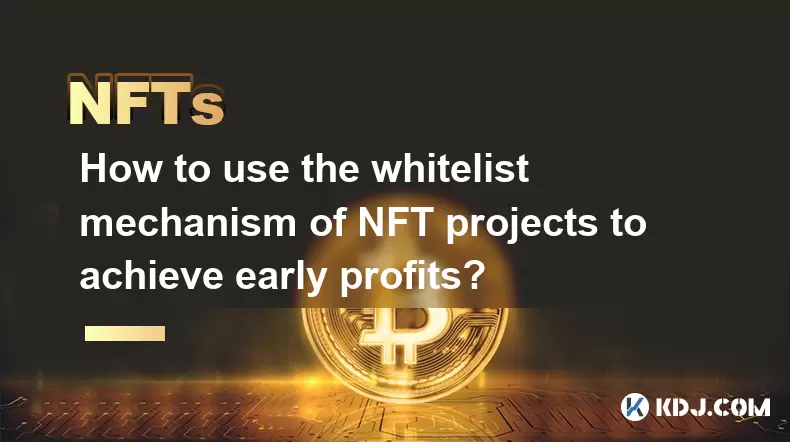
How to use the whitelist mechanism of NFT projects to achieve early profits?
Jun 21,2025 at 03:49am
Understanding the Whitelist Mechanism in NFT ProjectsThe whitelist mechanism is a popular strategy used by NFT project developers to allocate early access or exclusive minting rights to a select group of users. This system allows participants on the whitelist to mint NFTs before they are released to the general public, often at lower prices and with few...
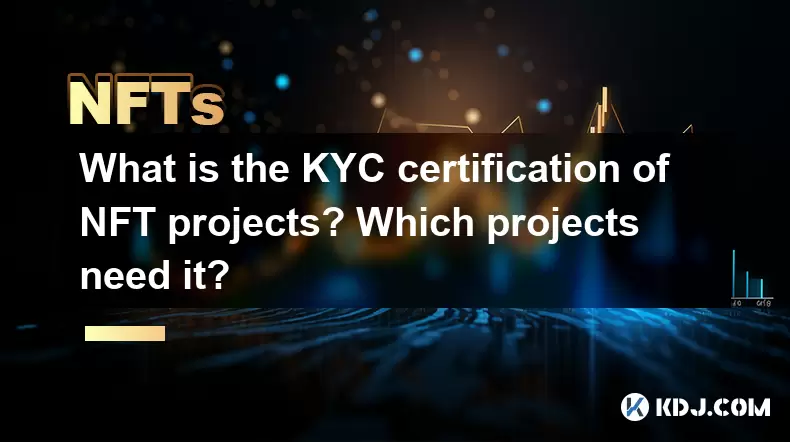
What is the KYC certification of NFT projects? Which projects need it?
Jun 21,2025 at 03:08pm
Understanding KYC Certification in the NFT SpaceKYC, or Know Your Customer, is a regulatory process used by businesses to verify the identity of their clients. In the context of NFT projects, KYC certification refers to the verification of user identities before they can participate in minting, trading, or selling NFTs on a platform. This practice is in...
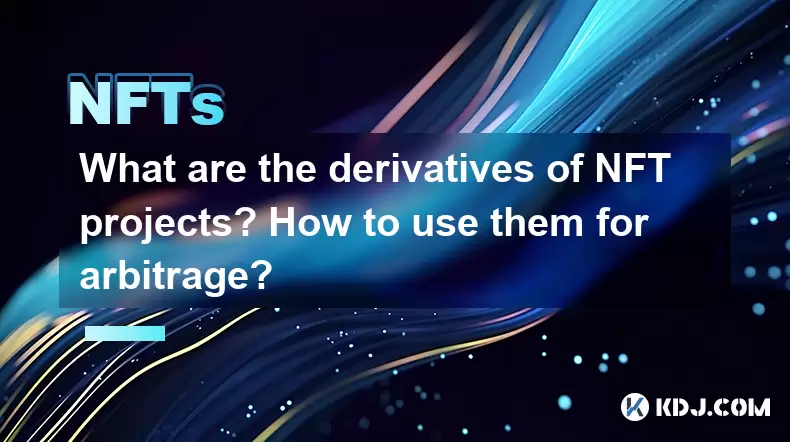
What are the derivatives of NFT projects? How to use them for arbitrage?
Jun 20,2025 at 06:14am
Understanding the Derivatives of NFT ProjectsNFTs, or non-fungible tokens, have evolved beyond simple digital collectibles. In recent years, derivatives of NFT projects have emerged as a new financial layer within the blockchain ecosystem. These derivatives are essentially financial instruments derived from the value and performance of underlying NFT as...

How are NFTs stored and traded? What are the common technical standards?
Jun 20,2025 at 08:49am
Understanding NFT Storage MechanismsNon-Fungible Tokens (NFTs) are digital assets that represent ownership of a unique item or piece of content, such as art, music, videos, or virtual real estate. The way NFTs are stored is crucial to their security and accessibility. Most NFTs are built on blockchain platforms like Ethereum, and the actual file—such as...

How to evaluate the value of NFT projects? Analysis from six dimensions
Jun 21,2025 at 02:28pm
1. Project Background and Team CredibilityEvaluating the value of NFT projects begins with a thorough understanding of its background and team composition. A credible project is usually backed by experienced developers, designers, and marketers who have a proven track record in blockchain or digital art industries. The presence of identifiable team memb...

What is the difference between NFT and digital collectibles? A must-read guide for beginners
Jun 19,2025 at 09:42pm
Understanding the Basics of NFTsNFTs, or Non-Fungible Tokens, are unique digital assets that represent ownership of a specific item or piece of content on the blockchain. Unlike cryptocurrencies such as Bitcoin or Ethereum, which are fungible and can be exchanged one-for-one, each NFT has distinct properties and cannot be directly replaced by another to...

How to use the whitelist mechanism of NFT projects to achieve early profits?
Jun 21,2025 at 03:49am
Understanding the Whitelist Mechanism in NFT ProjectsThe whitelist mechanism is a popular strategy used by NFT project developers to allocate early access or exclusive minting rights to a select group of users. This system allows participants on the whitelist to mint NFTs before they are released to the general public, often at lower prices and with few...

What is the KYC certification of NFT projects? Which projects need it?
Jun 21,2025 at 03:08pm
Understanding KYC Certification in the NFT SpaceKYC, or Know Your Customer, is a regulatory process used by businesses to verify the identity of their clients. In the context of NFT projects, KYC certification refers to the verification of user identities before they can participate in minting, trading, or selling NFTs on a platform. This practice is in...

What are the derivatives of NFT projects? How to use them for arbitrage?
Jun 20,2025 at 06:14am
Understanding the Derivatives of NFT ProjectsNFTs, or non-fungible tokens, have evolved beyond simple digital collectibles. In recent years, derivatives of NFT projects have emerged as a new financial layer within the blockchain ecosystem. These derivatives are essentially financial instruments derived from the value and performance of underlying NFT as...
See all articles

























































































